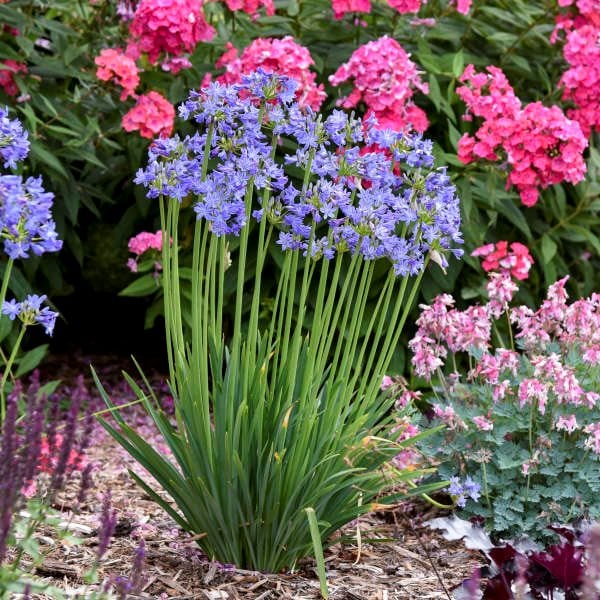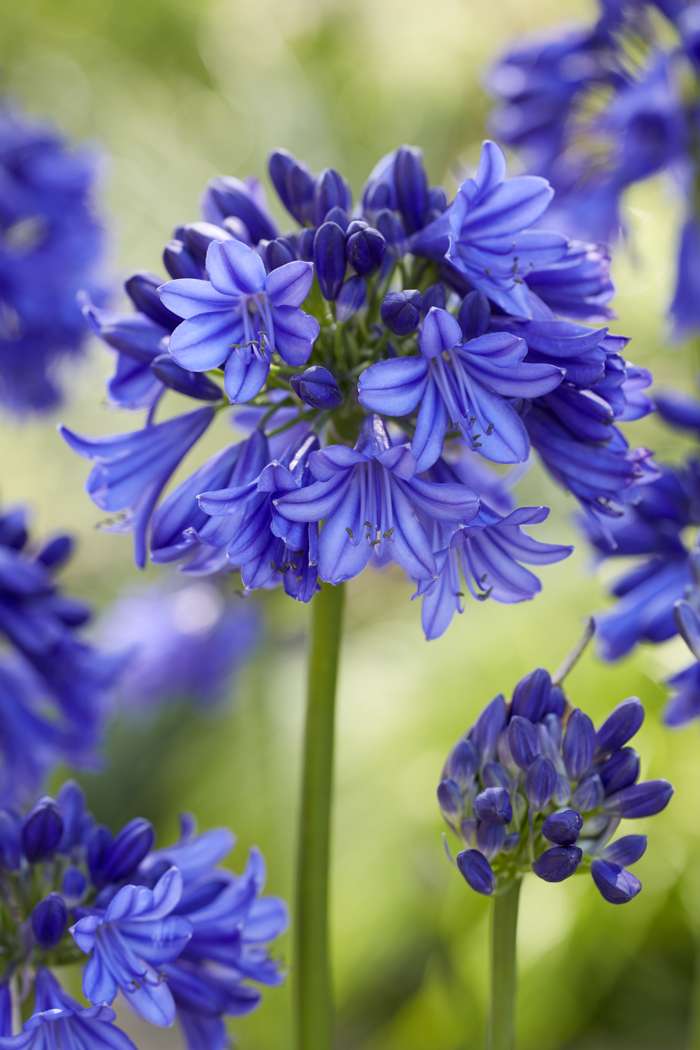Agapanthus Companion Plants: Perfect Pairings for Your Garden
Agapanthus Companion Plants: Perfect Pairings for Your Garden
Blog Article
Releasing the Secret to Effective Agapanthus Growing: Advice for a Flourishing Garden
In the realm of horticulture, cultivating agapanthus efficiently needs a strategic approach that incorporates various elements of plant care. By comprehending the subtleties of agapanthus growing, one can produce an atmosphere where these plants thrive and grow generously.
Growing Agapanthus: Ideal Practices
When growing Agapanthus, correct soil prep work is vital for guaranteeing effective development and growth of these lovely flowers. Agapanthus, typically referred to as Lily of the Nile or African lily, flourishes in well-draining soil with a slightly acidic to neutral pH level - Agapanthus. Before planting, it is important to change hefty clay dirts with organic issue such as compost or peat moss to boost drain and give necessary nutrients for the plants
To grow Agapanthus, select an area that receives complete sunlight to partial shade, as this will promote healthy and balanced growth and plentiful flowering. Dig a hole two times the size of the plant's origin sphere and put the Agapanthus at the very same depth it was formerly expanding. Delicately backfill the opening with dirt, pushing down strongly to remove any type of air pockets around the origins.
Water the freshly grown Agapanthus completely and remain to keep the dirt evenly damp, specifically throughout the plant's active expanding period. Agapanthus. Applying a balanced fertilizer once a month can further sustain the plant's growth and blooming. By complying with these ideal techniques for planting Agapanthus, you can create a sensational display screen of these captivating flowers in your garden
Perfect Dirt Issues for Agapanthus
For ideal growth and flowering success of Agapanthus plants, making sure the soil problems are suitable is critical. Agapanthus favors soil that is rich in nutrients, so integrating a well balanced fertilizer during the growing season can promote healthy and balanced development and dynamic flowers.

Watering and Feeding Tips
To make sure healthy development and vibrant blossoms, correct watering and feeding techniques are necessary for effective Agapanthus farming. Agapanthus plants gain from routine watering, especially during the growing season. It is suggested to water deeply when a week, guaranteeing the soil discover here is damp but not waterlogged. During warm weather condition or in pots, more regular watering might be essential to stop the dirt from drying totally.
When it involves fertilizing Agapanthus, a balanced plant food with equal components nitrogen, phosphorus, and potassium can be applied in the springtime to advertise healthy and balanced growth and blooming. Slow-release fertilizers are ideal for giving nutrients progressively over an extensive period. Stay clear of over-fertilizing, as this can result in too much vegetation growth at the cost of flowers.
Additionally, incorporating natural matter like garden compost into the soil can boost nutrient degrees and boost dirt structure, helping in the total health and wellness of the Agapanthus plants. By following these watering and feeding tips, garden enthusiasts can guarantee their Agapanthus plants prosper and produce magnificent screens of blossoms.
Pruning and Deadheading Techniques
Appropriate pruning and deadheading methods play an important role in preserving the wellness and looks of Agapanthus plants, complementing the crucial methods of watering and feeding for successful growing. Trimming Agapanthus includes eliminating invested flower heads, yellowing or dead fallen leaves, and overall shaping of the plant to advertise far better growth. Deadheading, the process of removing faded blossoms, not only enhances the plant's appearance however additionally encourages further flowering.
When deadheading Agapanthus, it is advisable to snip off the blossom stem at the base utilizing sharp, clean shears. This process reroutes the plant's power from seed production back right into origin and foliage growth, advertising a healthier and much more durable plant. Routine deadheading can prolong the blooming period of Agapanthus and stop self-seeding, which can lead to overcrowding.
In terms of trimming, Agapanthus normally benefits from a light trim after flowering to tidy up the plant and encourage fresh development. Cutting down the invested flower stems and getting rid of any type of damaged or dead foliage helps keep the plant's vigor and general appearance. However, it is vital to prevent reducing right into the crown of the plant, as this can deteriorate its health and wellness.

Protecting Agapanthus From Pests and Diseases
Implementing efficient pest and condition management strategies is essential to guarding the health and wellness and visit this website vitality of Agapanthus plants in cultivation. One common bug that affects Agapanthus is the Agapanthus borer, Click Here a caterpillar that passages right into the plant, causing damage to the fallen leaves and blossoms.
In addition to insects, Agapanthus are prone to conditions such as origin rot and fungal fallen leave places. By staying cautious and addressing bug and illness issues immediately, garden enthusiasts can assist their Agapanthus prosper and thrive.

Conclusion
Finally, effective cultivation of agapanthus calls for proper growing methods, excellent soil problems, sufficient watering and fertilizing, routine trimming and deadheading, and defense from diseases and pests. By following these methods and suggestions, garden enthusiasts can make sure a prospering yard loaded with stunning agapanthus blooms. Agapanthus. Keep in mind to maintain consistent treatment and attention to information to advertise the health and longevity of these spectacular plants
When planting Agapanthus, proper dirt prep work is important for guaranteeing successful growth and development of these stunning blossoms.Water the newly grown Agapanthus extensively and proceed to maintain the dirt equally damp, particularly throughout the plant's energetic growing period.For optimum development and flowering success of Agapanthus plants, making sure the dirt problems are ideal is essential. When transplanting or planting Agapanthus, guarantee the soil is well-prepared to give the essential structure for the plants to develop themselves successfully. One common bug that influences Agapanthus is the Agapanthus borer, a caterpillar that tunnels into the plant, triggering damages to the blossoms and fallen leaves.
Report this page